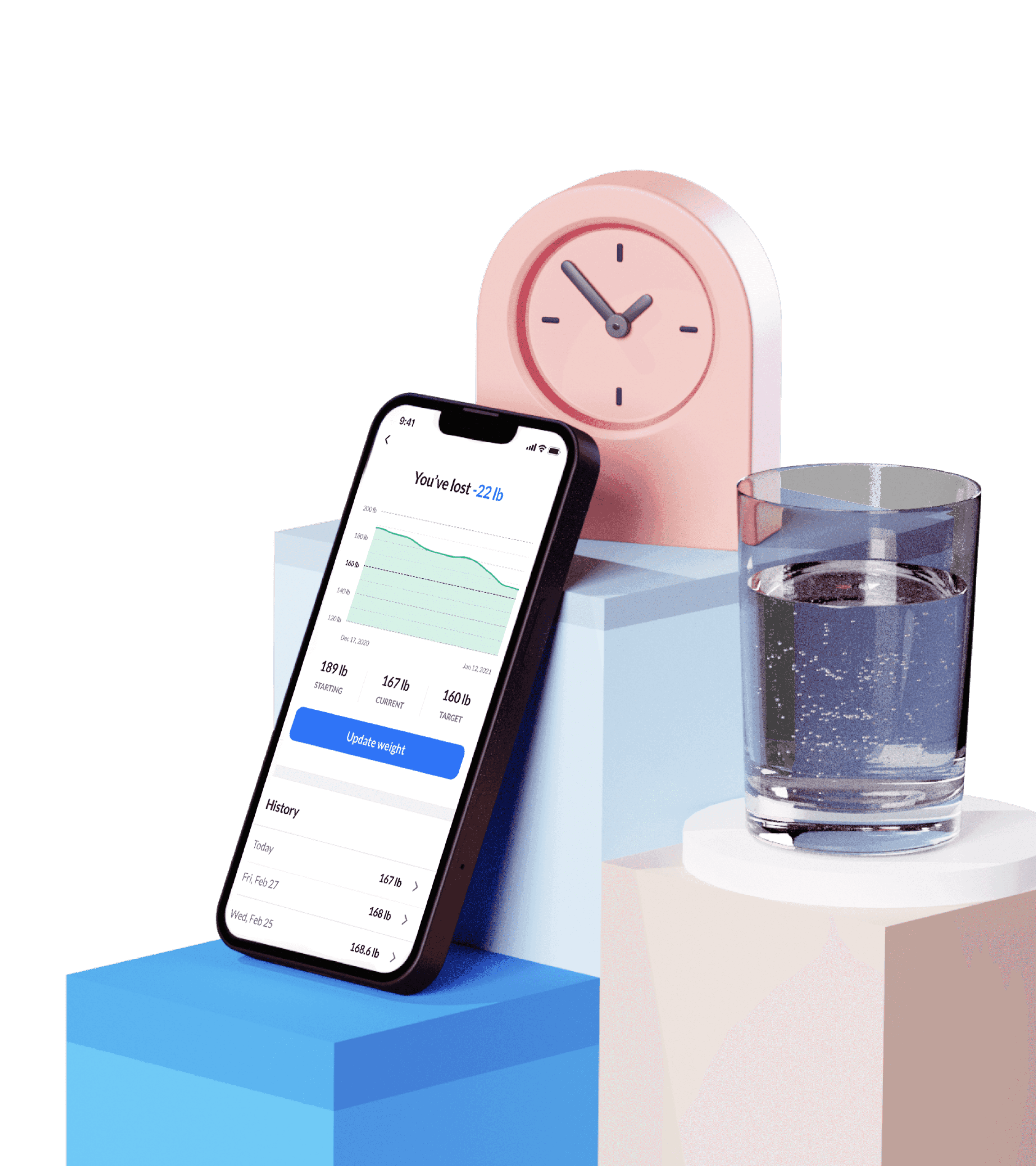Contents
OMAD : le jeûne intermittent sous stéroïdes
Si vous êtes un expert, ou travaillez avec un professionnel pour créer votre propre programme, il y a deux variables principales à prendre en compte : la durée de la fenêtre du jeûne et la durée de la fenêtre d’alimentation. Normalement, les régimes FI se concentrent sur certaines versions du jeûne, permettant aux jeûnes les plus courts d’offrir une plus large période d’alimentation, et aux plus extrêmes une période de privatisation de 48h. L’OMAD se concentre sur les deux mêmes périodes, en maximisant la première et en minimisant la seconde : il s’agit d’un temps de jeûne assez long, suivi d’une fenêtre d’alimentation très courte.
Cela dit, avec l’OMAD, les avantages du jeûne devraient être presque immédiats. Avec cette routine de jeûne, vous êtes globalement en train de jeuner toute la journée. Votre période d’alimentation est presque négligeable. Ces mesures extrêmes auraient les résultats suivants :
- Premièrement, des fenêtres de jeûne plus longues et plus fréquentes signifient des périodes prolongées d’autophagie accrue.
- En second lieu, votre taux d’insuline peut ne croître qu’une fois par jour et pendant une période assez courte (généralement environ une heure), ce qui signifie que votre système endocrinien est tranquille. (ce qui, en théorie, est ce qui relie le jeûne à la fois à l’amélioration de la santé cardiovasculaire et à l’atténuation de maladies telles que le diabète de type II ou diverses maladies auto-immunes). Cela signifie également une diminution du risque de symptômes de type diabète chez une population en bonne santé.
- Ne pouvant pas ingérer trop de nourriture en une fois, vous limitez naturellement vos calories quotidiennes. Ceci, combiné à l’activation du métabolisme fournie par le jeûne et, idéalement, associée à un régime sain d’exercice et à une sélection judicieuse d’aliments, pourrait vous apporter la solution ultime pour perdre du poids. En fait, c’est peut-être le moyen le plus rapide de perdre quelques kilos en trop.
Au-delà de ces avantages, vous bénéficiez de tous les avantages du SI, dont vous pourrez discuter ici.
Répondez à un
questionnaire d'une minute
et découvrez combien de kilos vous pouvez perdre avec DoFasting !

Le plus facile et le plus difficile à suivre
L’OMAD est en son cœur très simple à suivre. Il n’est pas nécessaire de compter les calories, de manger des aliments spécifiques ou de prendre des suppléments. Le repas quotidien ne doit pas nécessairement être consommé à une heure précise de la journée; vous pouvez choisir vos propres heures au début du régime. C’est vrai, une fois choisi, vous devrez peut-être vous en tenir à cela, car dans la plupart des versions, il faut maintenir le régime 23: 1, mais la version la plus simple ne vous oblige même pas à le faire : vous ne mangez qu’une fois par jour et c’est tout. Une pause-repas dédiée par jour vous fait gagner du temps et vous évite des tracas en matière de repas, de produits à acheter et d’argent au cas où vous décidiez de manger à l’extérieur. Ainsi, à certains égards, il s’agit de la version la plus accessible du jeûne.
Mais d’un autre côté, il peut être difficile de s’habituer à ne manger qu’une fois par jour. De longues fenêtres de jeûne peuvent vous donner la sensation de faim, des maux de tête et vous devrez peut-être éviter ces fêtes et dîners de famille (à moins qu’ils ne coïncident avec vos courtes fenêtres de consommation). Vous pouvez aussi bien démarrer l’OMAD avec vos portions habituelles, ce qui vous provoquera un déficit calorique sérieux, et qui peut vous rendre somnolent : étant une version concentrée du jeûne intermittent, votre corps est pris d’assaut et a plus de mal à s’adapter. Enfin, bien que ce soit un excellent régime pour un mois intense, à long terme, il a tendance à être trop restrictif et difficilement durable.
Ainsi, l’OMAD est à la fois simple ET difficile à suivre. Parfois surnommé “le jeûne des paresseux”, ce n’est certainement pas sans effort. Il est simpliste dans sa structure, mais apporte de sérieux efforts à suivre et à maintenir.
Les inconvénients
La théorie sous-jacente est que l’OMAD vous permet d’obtenir les avantages de l’IF plus rapidement et sans tracas; mais cela, naturellement, peut avoir un prix, et il y a des groupes qui devraient réfléchir à deux fois avant de l’essayer.
Certains des risques évidents sont les difficultés d’adaptation, notamment le tremblement, la faiblesse, la fatigue, l’irritabilité et l’incapacité de se concentrer, en particulier si vous êtes plus jeune. Mais il présente de graves risques pour la santé des personnes souffrant d’hypoglycémie, car les longues fenêtres de jeûne pourraient faire chuter la glycémie à des niveaux dangereux. Il est également dangereux pour les personnes souffrant de troubles de l’alimentation, tels que l’anorexie et la boulimie. Cela pourrait même vous amener à en développer un, appelé trouble de l’hyperphagie boulimique.
Bien que vous ayez probablement entendu parler de l’OMAD et de l’association céto, il est nécessaire de consulter au préalable un médecin professionnel, car il présente des risques sérieux. L’OMAD est suffisamment extrême en soi et ne doit pas être associé à d’autres régimes, du moins, pas sans l’avis d’un diététicien : il existe un cas d’homme qui a commencé à faire un jeûne OMAD avec un régime cétogène et qui a développé un cas sérieux d’acidose sanguine.
Une autre question est celle des périodes prolongées d’autophagie. Que ce soit réellement souhaitable ou non, ce n’est pas une question simple. L’autophagie est clairement une arme à double tranchant et peut être, selon le contexte, à la fois bonne et mauvaise. Cela peut améliorer l’état de certaines infections bactériennes, telles que le streptocoque, mais aggraver les symptômes sur d’autres, par exemple la brucella; aider contre la formation de tumeurs ; mais aussi protéger les cellules tumorales pendant la chimiothérapie. Cela peut aider contre certaines voies de la mort cellulaire automatisée; mais cela peut également supporter la mort cellulaire dans d’autres scénarios.
Dernier point, mais non des moindres, vous devez devenir intelligent dans vos repas. En théorie, vous pouvez vous abstenir de penser à quoi manger et de vous contenter de ce dont vous avez envie (l’OMAD seul ne recommande ni ne décourage certains aliments), mais il est assez difficile de rassembler tous vos nutriments quotidiens en une seule séance. Vous devez donc vous assurer de prendre votre dose quotidienne de vitamines et de minéraux, avec des aliments, et des suppléments.
Répondez à un
questionnaire d'une minute
et découvrez combien de kilos vous pouvez perdre avec DoFasting !

Faire en sorte que l’OMAD fonctionne pour vous
Si vous êtes toujours tenté par l’OMAD, vous devez savoir certaines choses. Tout d’abord, bien évidemment, vous devez sélectionner l’heure de la journée que vous allez consacrer à l’alimentation. Choisissez-la intelligemment et n’ayez pas peur de l’ajuster une fois que vous démarrez votre parcours OMAD. Faites-vous de l’exercice ? Ce serait une bonne idée de manger votre repas environ une heure après le sport pour reconstituer vos réserves d’énergie. Avez-vous besoin de nourriture pour pouvoir fonctionner et faire votre travail ? Mangez le matin
Comme déjà mentionné, ne soyez pas trop sévère. Si vous décidez d’essayer l’OMAD en même temps que la restriction des glucides, ou même si vous vous lancez dans le kéto, faites-le par petites étapes et écoutez votre corps, ou mieux encore, parlez-en avec votre médecin de famille ou votre nutritionniste. Adhérer à un régime comporte également des aspects psychologiques : si vous vous entraînez trop, vous risquez de perdre votre volonté au cours des premiers jours ou même de tricher le même jour et vous sentir mal à l’aise. Ainsi, vous pourriez envisager de commencer avec certaines des routines traditionnelles, telles que 16: 8, puis de basculer vers l’OMAD.
Vous devez également savoir que sur vos fenêtres de jeûne, vous pouvez consommer tout ce qui est autorisé par les autres régimes du SI. Ainsi, vous êtes libre de boire du café (sans lait ni sucre), du thé et même du bouillon d’os, avantages dont vous pouvez trouver ici [lien]. N’oubliez pas de boire suffisamment d’eau tout au long de la journée, surtout si vous avez tendance à boire de l’eau en même temps que vos repas.
Enfin, tout régime est mauvais pour vous s’il s’agit d’un engagement à court terme. Ainsi, vous devez faire en sorte que l’OMAD fonctionne pour vous le plus efficacement possible. La bonne question à poser est la suivante : est-ce que je pourrais manger ainsi pendant au moins le reste de l’année ? Si votre réponse est «non», l’OMAD n’est probablement pas pour vous.
Exemple de repas OMAD
Comme cela a déjà été discuté, prendre un repas par jour signifie que vous devez rassembler tous vos nutriments quotidiens en un seul repas. Puisque vous ne voulez probablement pas trop manger, vous devez absorber des aliments plus concentrés. Voici un exemple de ce à quoi votre repas OMAD pourrait ressembler.
Camembert au four avec salade de saumon
- Cuire au four un morceau de camembert (250g)
- Faites cuire une tasse de graines de quinoa. Servir avec du camembert sur le dessus.
- Préparez la salade :
- Prenez 300 grammes de saumon rose cru. Cuire à la vapeur au niveau souhaité.
- Laissez refroidir un peu. Lavez 100 grammes de jeunes pousses d’épinards et mélangez-les avec 100 grammes de graines de citrouille séchées et 100 grammes de graines de tournesol.
- Ajoutez du sel si vous le souhaitez. Mettez une cuillère à café d’huile d’olive extra vierge.
- Placez une tranche d’avocat et le saumon préparé.
- Éventuellement, tranchez un oignon rouge et ajoutez-le dans le bol.
- Mettez une tasse de tomates cerises (vous pouvez les griller si vous le souhaitez) et vaporisez du vinaigre balsamique
- Prenez deux œufs durs, coupez en tranches et mettez-les à côté du saladier.
Mangez avec une tranche de pain allemand au seigle complet. Le repas consiste en 1400 calories, contient peu de glucides et contient au moins 100% des vitamines et des minéraux recommandées.
Répondez à un
questionnaire d'une minute
et découvrez combien de kilos vous pouvez perdre avec DoFasting !

Conclusion
L’OMAD est une version extrême de l’IF qui permet d’obtenir les résultats souhaités plus rapidement. Il vous permet de gagner du temps sur les repas. Cependant, il peut être plus difficile de commencer avec ce régime qu’avec d’autres types de jeûne intermittent et nécessite plus de volonté. Cela nécessite également d’être intelligent dans vos choix de repas et requiert une attention supplémentaire s’il est combiné à d’autres régimes alimentaires, tels que le céto.
See how DoFasting will improve your life
Find out what works for you with this 60-sec quiz approved by our experts and get your personal revolutionary fasting assistant.
Start the Quiz














